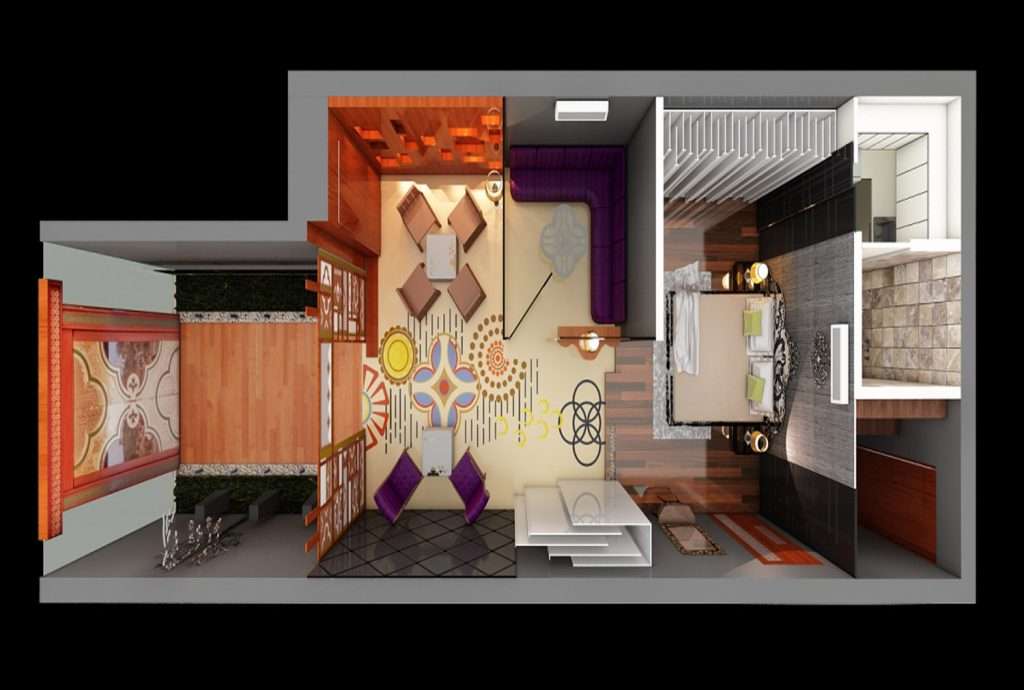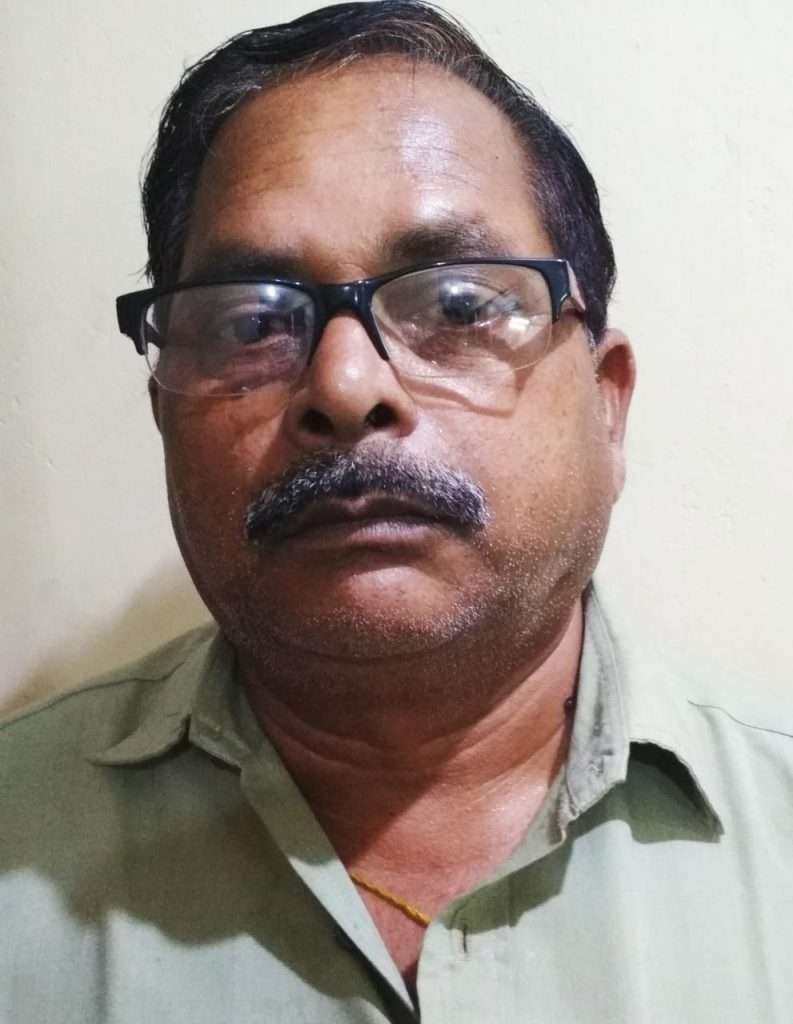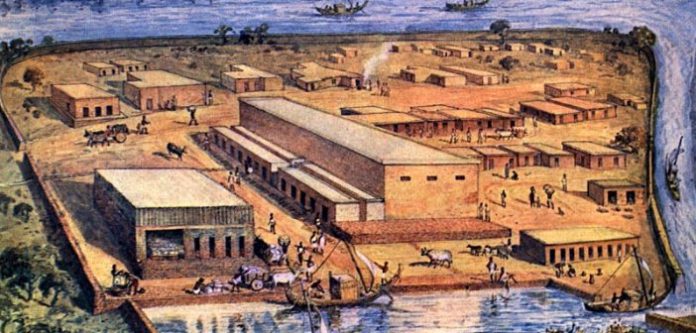Manasara is an ancient text on Indian architecture and design. It is a Sanskrit text organized into 70 adhyayas(chapters) and 10,000(Ten thousand slokas). It is a Vaastu Shastra or Shilpa sastra of very older era, probably of 1st millennium CE. The complete manuscripts have survived unlike other texts of ancient India. Manasara gives detailed guidelines for building Hindu temples, sculptures, houses, gardens, water tanks, laying out of towns and other structures.
The word ‘Manasara’ is compound of two Sanskrit words – Mana (measurement) and Sara (essence) – meaning essence of measurement. Manasara is translated into English by P.K. Acharya. Before Manasara, there were many texts on architectures like there were many grammarians before Panini’s Astadhyayi. But those texts have not survived. Manasara survived in its complete form.
The Manasara is an ancient text of about 700 AD. Historians opine that Manasara is a recension of recensions evolved over the centuries. It is not the work of a single author. At different times, different authors have added materials on it. Architecture has been mentioned in other ancient texts also like Puranas, Agamas and Brihatsamhita. But we do not know whether these Puranas have borrowed from Manasara or vice – versa. Manasara was discovered in South India in the eleventh century.
The Manasara mentions 10,000 verses in Sanskrit covering a range of architectural topics within the tradition of Hinduism. The contents of Manasara is summarised as below,-
Chapter Verses Topics
01 40 Sangraha(a brief list of contents on Hindu, Jaina
and Budhist arts)
02 80 Silpi – Laksana (qualification of architects)
03 34 Vastuprakarana (objects of architecture)
04 42 Bhumi Sangraha (selection of construction site)
05 91 Bhupariksa (procedures for testing the soil)
06 120 Sanku – SthapanaLaksana (rules for gnomoms and
pegs)
07 271 Pada Vinyasa Laksana (ground plans)
08 88 Balikarma (offering and puja before planning and
construction)
09 538 Grama (village planning)
10 110 Nagara (town planning)
11 145 Bhumi Lamba (building dimensions)
12 217 Garvavinyasa (building foundation)
13 154 Upapitha (pedestal of columns)
14 412 Adhistana (base of columns)
15 437 Stambha (columns)
40 158 Rajaharmya (royal palace)
41 51 Rajanga (royal entourage)
42 82 RajaLaksana (royal insignia)
43 170 RathaLaksana (chariots)
44 85 Sayana, Paryanka, Marca (couch, beds and swings)
51 94 Trimurti (Brahma, Bishnu and Mahesh)
52 376 Linga (Shiva icon)
53 60 PithaLaksana (the Hindu temple images, supporting
structure for deities)
54 192 Sakti Laksana (the Hindu temple images, female
deities)
55 94 JainaLaksana (the Jaina temple images)
56 18 BaudhaLaksana (the Budhist temple images)
57 60 Muni Laksana (the images of Sages)
70 118 Nayanonmilana (rules for the chiseling of the eye)
Manasara seems to occupy the same importance to Shilpa(art and craft) like that of Manu – Smriti Law among the Hindus. Manasara attests to the early advancements and literature on architecture in India. Measurements and ratios are precise. The palm leaf manuscripts do not have any drawings. But the English translations include drawings.
The Manasara is the best known and possibly the most complete treatise on Indian architecture that has survived into our own modern times. Its first complete manuscript was discovered in a temple Thanjavur (Tamilnadu) in the early 20th century. So many South Indian temples were constructed according to ‘Manasara’. The history and context of Manasara is often considered as more relevant to studies of temple architecture than to architecture serving any other function.

A more accurate analysis of ‘Manasara’ suggests, it is a broader design and architecture treatise on a wide range of man-made things of the eleven manuscripts then found, 3 were Devnagiri Script, 4 were in Grantha script, 2 in Telugu script, one each in Tamil and Malayalam scripts. The language of all was in Sanskrit. Six were in palm leaf and the remaining were on paper.
Prof A.B. Keith has said in his book “History of Sanskrit literature that practically everything in India was expressed in the Sanskrit language – whether it is law, religion, philosophy, mathematics, literature, society, folktales, medicines, meteorology, indigenous technologies etc. And now architecture was also written in Sanskrit and that is known as Manasara. Sanskrit is well known for its brevity. And remarkably in the Manasara, Sanskrit has done a yeoman service by narrating precisely the rules of construction which is relevant event today and is followed also as Vaastu Shastra. Manasara is the pride possession of India.
(The views expressed are the writer’s own.)

Radhakanta Seth is an Income tax officer in Sambalpur. He is a freelance writer and his articles have been published in some Oriya dailies like Sambad, Samaj, Dharitri, and English dailies like The Telegraph and in a sociological journal ‘Folklore’ published from Kolkata.
He can be reached at [email protected]

